
2,598 views

The Land of the Singing Waves
By Rahuldev Rajguru
Last Updated: 26 Apr 2021
Are you visiting “Denmark of India”? a head chef of Holiday Inn, Bangalore asked me over a casual conversation during my wedding anniversary dinner. It was the beginning of December and I had already planned my family’s winter holidays for the Christmas break. Somehow, I have a knack of locating unexplored places in South India where tourists don’t throng even during Christmas time. The chef happened to be from Karaikal and I told him that I am visiting that coastal belt in a few weeks, hence his curious question.
Following an adventurous couple of days Kayaking in Mangrove forest, it was time to drive further south along the Coromandel coast and explore the history of India's colonial past. Tharangambadi is a quaint fishing hamlet on Coromandel Coast, 120 kms. south of Pondicherry on ECR (East Coast Road). It is one of the unknown historical places in Tami Nadu. "Tharangam" in Tamil means, "Waves" and "Badi" means "Singing" hence; it is a place of singing waves. Danish Nobleman and Admiral Ove Gjedde along with his ship and crew arrived in Tharangambadi in 1620 as part of Danish East India Company to trade pepper and cardamom with India. He established the first ever Danish settlement in India and the rest is history.
The Historical Town of Tharangambadi
We took a small detour from ECR to enter Tharangambadi and it took about a 5-minute drive to reach the seashore (the end of Tharangambadi). I could not believe that such a tiny place was an erstwhile Danish settlement for a whopping 225 years. I am sure you are curious reading this; even my curiosity reached its peak and the little history buff in me wanted to rush to explore it further. The moment we entered through the Town Gate embossed with coat of arms and a crown of Danish King Frederick IV, I could sense that I am entering a historical place of Tamil Nadu. The only shocking thing for me was no mention of Tharangambadi anywhere on the highway. There were no signboards and no milestones even though this place is of historical importance of Tamil Nadu.

Town Gate, built in 1792 was once an integral part of the fortified place of Danish settlement
Inspired by the success of Portuguese, Dutch and British East India Company, Admiral Ove Gjedde and his crew were asked to board the Danish ship that set sail to Ceylon. Navigating through the Atlantic Ocean and circumventing Africa, they landed in Ceylon on May 1620 to sign a trade deal after almost two years at sea, to eventually discover that Ceylonese are no longer welcoming foreigners.
After 2 years of sailing and half of his crew dead, Admiral Gjedde started out once again and with sheer luck, he dropped an anchor at Tharangambadi. This tiny village along Coromandel Coast with a population of 3,000 was under a very powerful Thanjavur Nayak Dynasty. After tough negotiations, Gjedde succeeded in signing a treaty with Thanjavur King, Ragunath Nayak for a small piece of land measuring 5x3 miles for an annual tribute of Rs. 3,000. Here they set up their trading base on Indian Territory. Unable to pronounce the name, Danes christened it to Trankebar on November 19, 1620. British later renamed "Tranquebar" after Danes sold it to them in 1845 for 1.25 million rupees (12.5 lakhs rupees).

The map of Tranqebar during 17th and 18th century, something you can spot even today if you take a stroll deep inside fishermen commune in Tharangambadi
I was curious what is the meaning of Tranquebar. The locals whom I interacted with believe that the place offers a sense of tranquility and restfulness and hence, British named it Tranquebar. This interesting fact about Tamil Nadu, particularly Tharangambadi, is unknown to most people. To me, the continuous sound of sea waves hitting the rocks and producing soothing background music is what "Tharangambadi" is all about the singing waves. For the past few years, I have been exploring such offbeat places in coastal Tamil Nadu.
Neemrana Bungalow on the Beach
There are extremely limited options for places to stay in Tharangambadi in case you want to spend a few days here. We, being two families, decided to stay at a luxurious heritage property in Tharangambadi, Neemrana Bungalow on the Beach, which is unfortunately the only decent accommodation. This 250-year-old beach-facing building was the residence of Opperhoved styled Danish Governor to India and is strategically located exactly opposite to Dansborg Fort. The bungalow was renovated from 2000 to 2004 and converted into a luxurious heritage hotel by Neemrana Properties. The clock turns back a couple of centuries with high ceilings, wooden flooring, classic bathrooms, antique furniture, royal cutleries, and spiral staircase made from wood with wide steps, just to name a few. It is not a sprawling property but with just 8 rooms, it is big enough for the guests to take a stroll and enjoy splendid nature with a taste of heritage. We were initially a bit hesitant to stay here but I would honestly admit that the experience of Tharangambadi would have fallen short had we decided otherwise. This is quite a unique place to visit in Tamil Nadu.
Tharangambadi Bungalow built during the 18th century is converted into a heritage hotel
Danish Fort of Tharangambadi (Fort Dansborg)
When Danes signed the treaty in 1620, it was evident that there will be an influx of Danish officials and their families to Tranquebar. About 400 people including soldiers migrated from Denmark and they needed homes. However, Admiral Gjedde had a different idea. He built a Danish Fort. Yes, he built a huge Danish-style trapezoidal-shaped fort with the help of the then King and his construction workers. It is a column-structured, two-storied building with a dome; classic Danish architecture. Fort Dansborg built on the sleepy shores of Tranquebar, overlooks Bay of Bengal and offers a breathtaking view from the upper floor.
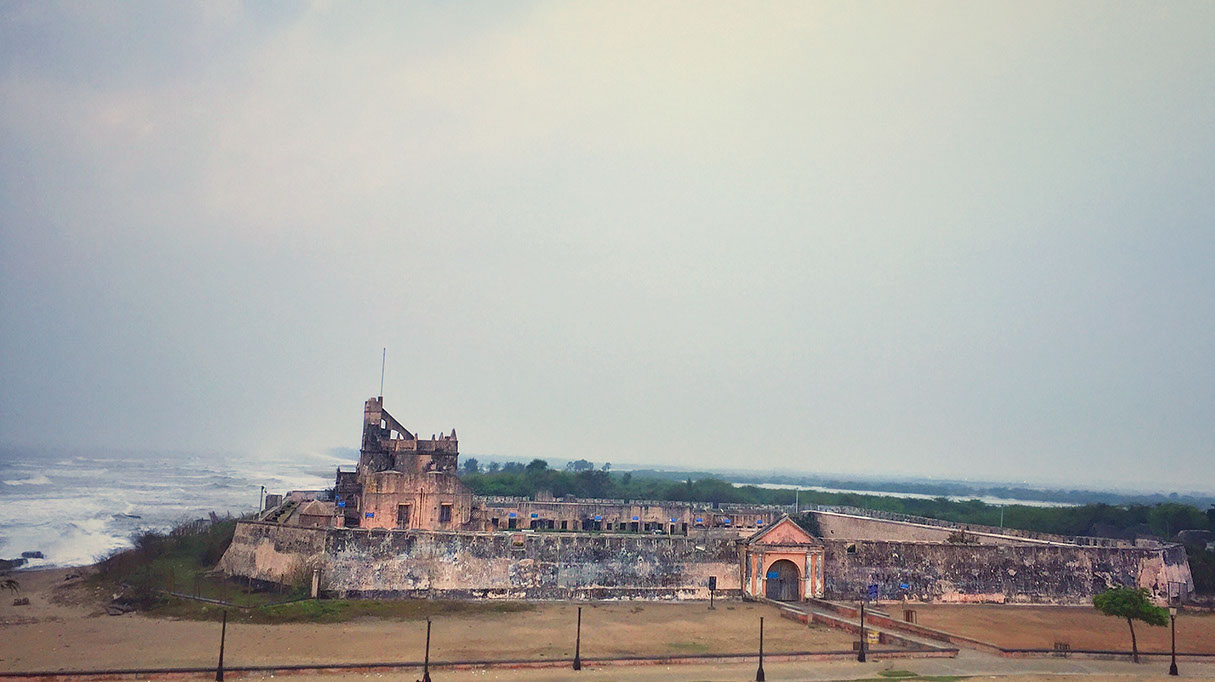
Dansborg Tranquebar, 60 meters long and 11 meters wide, is the second largest fort (after Kronborg) ever built in the Danish history
The design of the Dansborg fort is quite intriguing, something I have never seen before. The place was not built for the royal family but is still called a 'Fort'. It is divided into two wings. The left wing, with 3 rooms on the first floor was the official residence of the Danish Governor. It has a kitchen with an open fireplace and chimney and a big church room (now converted into a museum). The right wing houses store rooms, barracks, living rooms for soldiers and other staff as well a prison. The fort has a big garden in the center and two wells for drinking water. There is a huge periphery that is accessed from the upper floor for the guards to keep any eye on the fort as well as the surrounding.
Lavishly built Tranquebar Fort was the residence of early families that arrived from Denmark to Tranquebar
There are dedicated rooms for the guards. There are canons placed on the upper floor facing the south towards the Bay of Bengal. This is where the trading ships used to dock in those days. The upper floor also has a dedicated space for the office from where the officials used to manage trading activities. Danish Fort of Tharangambadi is built with brick and has two main doors; one faces the north while the other the east.

Canon at Danish Fort Dansborg facing the Bay of Bengal
The Tsunami of 2004 damaged the citadel walls and other structures of the fort followed by restoration work in 2005 and again later in 2011. Check Danish fort timings especially if it is a day trip.
The first Protestant church in India
Catholicism had already penetrated India through Portuguese, who were the first to enter the sub-continent. However, it was the year 1705 when King Frederick IV of Denmark, who was also the head of Lutheran Church, took the initiative to introduce the first Protestant Missionaries in India in Tranquebar. Bartholomaus Ziegenbalg and Heinrich Plutschau, two German missionaries with "Tranquebar Mission" reached here in 1706 to alter the religious mixture of India. Danes built the first ever Protestant Church of India in Tranquebar, Zion Church. Initially, it was built for exclusive use of the Danish Governor but later it remained in the forefront as the site for baptisms.

Remodeled Zion Church, the Centre of preaching in Tamil language in early 18th century
There was huge opposition to the work of Ziegenbalg, not only from the locals but also from the Danish authorities. He was imprisoned for a brief period. He was mesmerized by the charm of this simple and beautiful hamlet that converted into an obsession with learning the local language, Tamil. He brought a printing press from Denmark and set it up as India's first Tamil printing press. He started translating various testaments in Tamil and ended up printing 300 odd books in Tamil including the Bible, the first ever full translation to an Indian language.

Beautifully decorated Altar during Christmas of the first Protestant Church of India
Ziegenbalg - father of the modern Protestant Mission
He preferred living with the locals instead of the posh accommodation offered to him within the Danish commune. He also set up the first girls' school in India in 1707 with a daily free meal. He died at a very young age of 36 and as per his wishes; his remains were brought back to Tranquebar and lie interred in the New Jerusalem Church. Tranquebar has not forgotten Ziegenbalg till date and on the occasion of 300th anniversary of his arrival in Tranquebar in 2006, around 10,000 people of Hindu, Muslim and Christian ethnicity celebrated his work during a weeklong festival. The Government of India also released a postage stamp to commemorate the event and declared him 'Father of the modern Protestant Mission.'
Due to the COVID situation, schools were closed during our visit and unfortunately the printing press setup by Ziegenbalg lies in the same premise, so we could not visit. His house is right opposite Zion Church at the intersection of King's Street and Rani Street, which has been converted into a beautiful museum. Unfortunately, we couldn't visit that either due to COVID as it remained closed.

Ziegenbalg statue in front of his residence converted into Tranqebar Maritime Museum and Danish-India Cultural Centre in 2006 to celebrate 300th anniversary of his arrival in Tranquebar
New Jerusalem Church of Tharangambadi
Since, Zion Church declined to accept native converts to worship, Ziegenbalg decided to raise money and set up another church. The foundation for the Jerusalem Church was laid on June 14, 1707. It became very popular in no time and was filled to capacity and the premises needed to be expanded.

The Altar of Jerusalem Church in India, an extremely well maintained church even after 300 years
On February 9, 1717, the foundation of New Jerusalem Church was laid and it was consecrated on October 11, 1718, which happened to be the birthday of Danish King Frederick IV. It was built with a blend of Danish architecture and Indian design elements. Unfortunately, Ziegenbalg died on February 23, 1719 in Denmark and his remains were brought back and buried at the New Jerusalem Church.
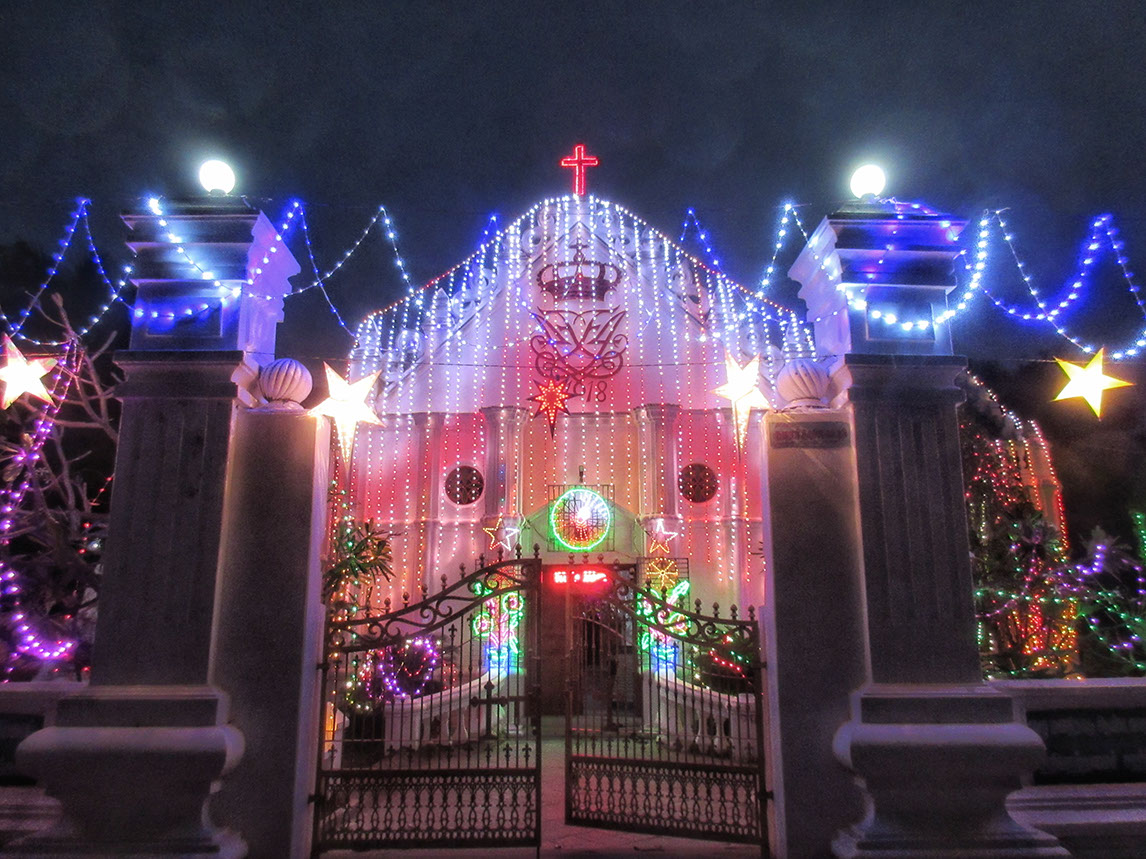
Christmas decorations in New Jerusalem Church that carries the Royal Monogram of Frederick IV with the year of consecration beneath it
Heritage places of Tharangambadi
There are many places to visit in Tharangambadi. You cannot miss out a beautiful European bungalow painted in yellow with large windows and tall pillars along the verandah. The colonial house was the Governor's Bungalow and a private residence in those days. It has been declared a heritage property, restored now, usually kept locked.

The colonial bungalow, built in 1793 functioned as District Court in 1884 after Tranquebar was sold to British in 1845
Sri Masilamani Nathar temple is the oldest manmade structure in Tharangambadi, centuries before Danes arrived. A Shiva temple that holds huge pride among the locals had some of its parts destroyed during the Tsunami which brought it closer to the ocean. It is a popular tourist place in Tharangambadi.

Also known as Manivaneswaram, it was built by Maravarman Kulashekhara Pandian in 1306
Ocean vibes are the best when you walk around the temple as the waves hit the rock structures resounding into the sea. A walk down the rock bridge is Tharangambadi beach specialty. A great evening pastime is sitting by the water and feeling the waves hit you with moisture.

This place reminded me of Promenade in Pondicherry, a colonial way of enjoying the ocean waves
A stroll down the ocean from the rear side of the temple treats you to a glimpse of the heritage European settlement of Trqnquebar. INTACH (The Indian National Trust for Art and Cultural Heritage) has done a fabulous job of restoring some of the old streets and houses in Tranquebar. The walk ends at the fishing harbor where one can peek into the local fishermen culture of today's Tharangambadi. This is truly a unique place to visit in Tamil Nadu.

Restored Goldsmith Street and the old colonial style houses of Tranquebar Era
The hidden gem of Tharangambadi
Deebak, the manager of "Tharangambadi Bungalows on the Beach" is born and brought up in Tharangambadi. Sensing my penchant to explore heritage of Tharangambadi and learn history, he guided me to a place hardly any visitors to Tharangambadi know about. The primary source of income for people over here is fishery but the entire district of Nagapattinam heavily relies on agriculture even though it is predominantly a coastal area. Tharangambadi lies near the mouth of a distributary of River Kaveri. There is a confluence of River Kollidam and the Bay of Bengal in Tharangambadi. River Kollidam is the northern distributary of Holy River Kaveri and flows through a highly fertile agricultural delta of Thanjavur.
The visit to the place of confluence at dawn was amazing as we could mingle with a few fishermen and got a glimpse of their daily life. One of the fishermen was surprisingly fluent in Hindi and he obliged me to board his tiny boat for a round trip to a small island through the confluence of deep water. My family meanwhile, was busy collecting beautiful shells from a pile they had brought over to the shore. This reminded me of the morning we spent at Manapad beach, another unique place to visit in Tamil Nadu.
A beautiful site of confluence of River and Sea in Tharangambadi
The combination of sunrise and Bay of Bengal splashed hues of orange on the surrounding. I love watching the sunrise at the ocean but again it was my turn to miss out on that. Coastal belt of Tamil Nadu receives heavy rainfall from October to December and weather remains a bit gloomy most of the days with not much of Sun outing. Well, nature and weather have their own say; and it's best to explore what you have, rather than crib. I have learnt this the hard way over 2 decades of my travel. It was time to check out of our hotel and head to Karaikal and Velanaknni.
Frequently Asked Questions:
Why is Tharangambadi famous?
Admiral Ove Gjedde along with his ship and crew arrived in Tharangambadi in 1620 as part of Danish East India Company to trade pepper and cardamom with India. Here, he established the first ever Danish settlement in India.
Which place is called "Denmark of India"?
Tharangambadi, also known as Tranquebar was the first Danish colony in India. It is one of the most beautiful historical places in Tamil Nadu.
How far is Tharangambadi from Pondicherry?
Tharangambadi, a Tamil Nadu historical place and a quaint fishing hamlet on Coromandel Coast is located 120 kms south of Pondicherry on ECR (East Coast Road). Here is the route.
Disclaimer: This blog may contain affiliate links. At no extra cost to you, we may get a small commission if you buy anything. All products and services we endorse have been personally used or come highly recommended to us. These incomes allow us to keep the community supported and ad-free.
Gallery
Video Gallery
The grandeur of Christmas at New Jerusalem Church, Tharangambadi
A view of Tharangambadi from the top
Things To Consider
About the author
Rate the Story
Related Stories
Please share your comment

The fort looks to be well maintained, I am surprised not many people are aware about Tharangambadi.



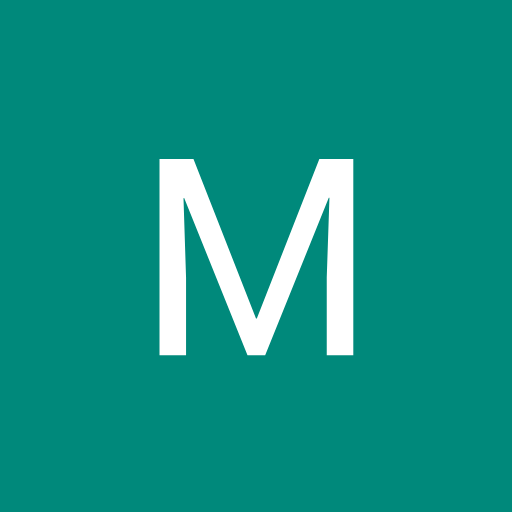


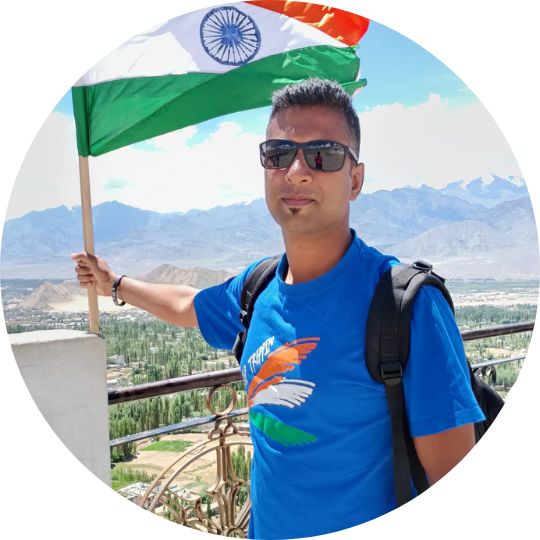

Danish settlement in India, never heard of before. I'm quite impressed such a beautiful explanation. How much is the cost for a stay in that Bungalow?

Thank you for stopping by. We paid about INR 10K per night, unfortunately that's the only decent option available for stay as of now.








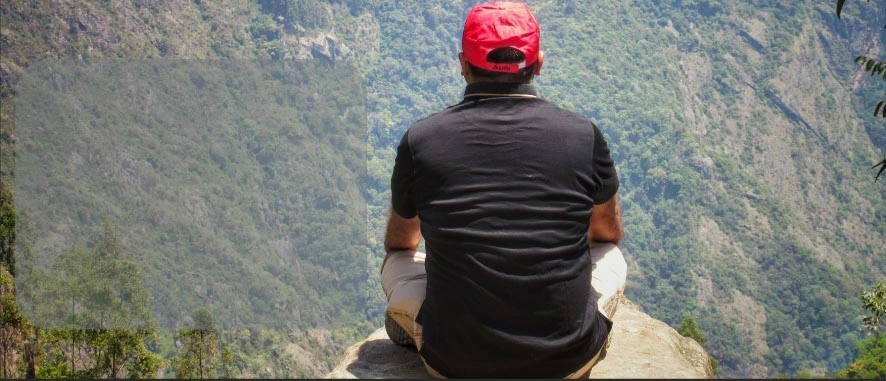

Name
Email
Comment